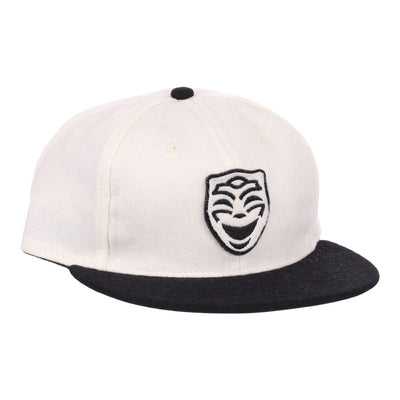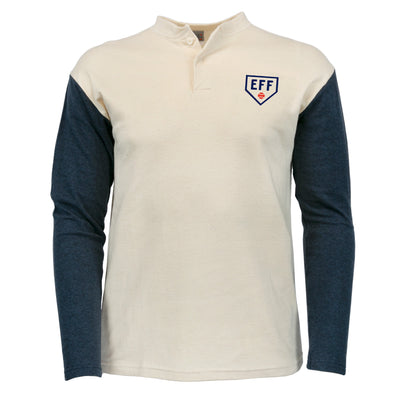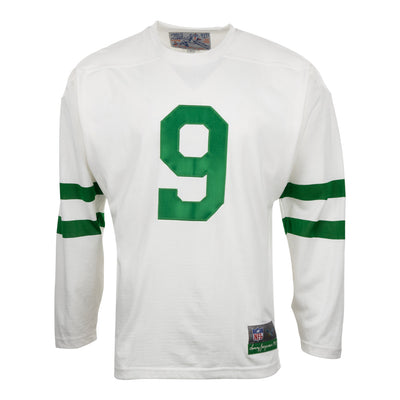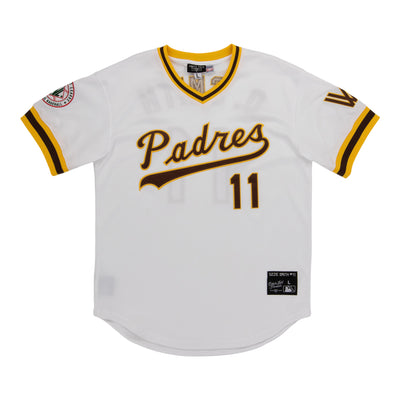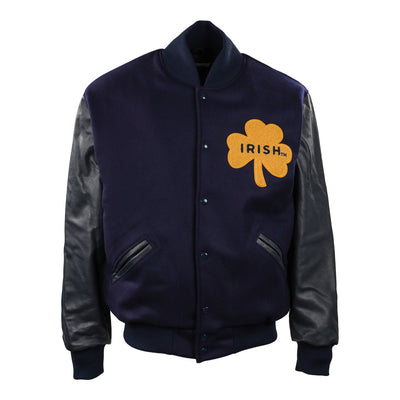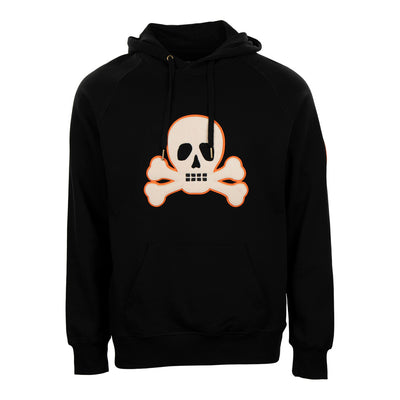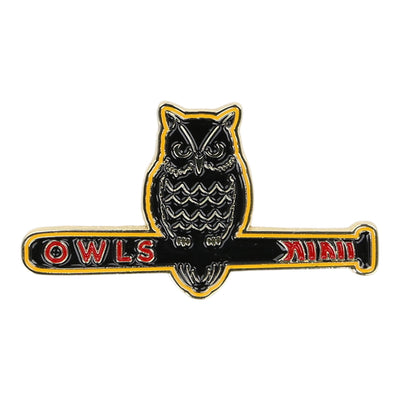A Brief History of Flannels at Ebbets Field Flannels
By, Jerry Cohen
It’s ironic in a way that a company called Ebbets Field Flannels is perhaps best known now for its vintage baseball caps, but at one time, authentic flannel shirts was not only our reason for existing, but the only product we made. And after 32 years, and with 500 different historical baseball jerseys on our website, it’s understandable if that original mission has been somewhat lost in the mists of time. So we decided this month to focus the spotlight back on our founding message, since many of you have come to know us more recently.
Why “flannels”? There are really two parts to the story of why I chose to start a vintage baseball jersey company back in 1988. The first is aesthetic. I grew up a baseball history buff, and the abandonment of the classic button-down baseball uniform of wool material and its replacement by stretch polyester knit fabric with pullover shirts and garish tricolor belts just seemed wrong to me. Baseball was a game of tradition, and although the uniform evolved over the years, there was a continuity from Honus Wagner to Babe Ruth to Jackie Robinson to Mickey Mantle as far as the uniform went. In my mind the poly doubleknits of the 70s threw out all that tradition, and while some of the experimentation in the uniforms that came with the switch was interesting, I found, as with many 1970s trends, most of these designs disposable. In response, I appointed myself as the person who would point out this historical abomination, and the Company I started was the vehicle – if not for righting a historical aesthetic wrong – but for giving myself (and eventually my customers) a means for expressing their solidarity. (While we’re here, let’s dispel a myth: The wool flannel uniforms were not “hotter” than what replaced them, as anyone who has been encased in a polyester knit garment on a hot day can attest. The new fabric offered ease of laundering and didn’t require repair. It did not improve player comfort).
It’s ironic in a way that a company called Ebbets Field Flannels is perhaps best known now for its vintage baseball caps, but at one time, authentic flannel shirts was not only our reason for existing, but the only product we made. And after 32 years, and with 500 different historical baseball jerseys on our website, it’s understandable if that original mission has been somewhat lost in the mists of time. So we decided this month to focus the spotlight back on our founding message, since many of you have come to know us more recently.
Why “flannels”? There are really two parts to the story of why I chose to start a vintage baseball jersey company back in 1988. The first is aesthetic. I grew up a baseball history buff, and the abandonment of the classic button-down baseball uniform of wool material and its replacement by stretch polyester knit fabric with pullover shirts and garish tricolor belts just seemed wrong to me. Baseball was a game of tradition, and although the uniform evolved over the years, there was a continuity from Honus Wagner to Babe Ruth to Jackie Robinson to Mickey Mantle as far as the uniform went. In my mind the poly doubleknits of the 70s threw out all that tradition, and while some of the experimentation in the uniforms that came with the switch was interesting, I found, as with many 1970s trends, most of these designs disposable. In response, I appointed myself as the person who would point out this historical abomination, and the Company I started was the vehicle – if not for righting a historical aesthetic wrong – but for giving myself (and eventually my customers) a means for expressing their solidarity. (While we’re here, let’s dispel a myth: The wool flannel uniforms were not “hotter” than what replaced them, as anyone who has been encased in a polyester knit garment on a hot day can attest. The new fabric offered ease of laundering and didn’t require repair. It did not improve player comfort).
But the second reason I started the business is more important: I saw the opportunity to tell the stories of the teams and players who history had ignored. For example, we all recognize the greatness of the Negro Leagues now, but in 1988 this history was not generally known. Similarly, in the days when MLB teams existed in only a handful of cities in the Northeast and Midwest, minor league baseball consisted of proud independent regional leagues, and had a far greater importance in the overall baseball hierarchy than the “farm” system for the majors they eventually became. Add to that the history of baseball in Latin America and Japan, and the known baseball universe was vastly larger than what was recognized by most people at the time. Not only did I think these stories needed to be told, but these “alternate” baseball realities presented fertile ground for my early uniform research. Very simply, I deduced that if I found this history exciting, perhaps others would as well. And that if I appreciated the beauty of these uniforms, there must be others who felt the same way.
I have covered the birth and early days of EFF in detail many times over the years, but a few early challenges had to be overcome to even have a business that made authentic flannel baseball jerseys. First and foremost, the fabric to make these shirts no longer existed. After all, it’s hard to have a flannel shirt company without, you know, the flannel. By some miracle, after chasing down one potential source after another, I found a gentleman who had stockpiled some random rolls of old baseball uniform cloth in a warehouse in upstate New York. Being a dirt poor musician I saved my pennies and bought one roll at a time, sight unseen. The UPS driver would deliver it discreetly to my minimum wage job in Seattle (well, as discreetly as you can deliver a 90-yard roll of fabric). I would pay the driver and open up the bundle like it was Christmas morning, not quite knowing what to expect. Often what I received was original Dodge-Davis fabric from the 1940s. Dodge-Davis was the gold standard back in the day, produced in New England woolen mills for the major sporting goods suppliers like Rawlings and Wilson, and used in MLB uniforms. Some of this fabric belonged in a museum, and I wish I could have saved it, but it all had to be cut up to use for early orders. I received the home white, road gray, and various pinstripes (Other historical colors presented challenges. I distinctly remember dying some white shirts in my bathtub at home to get the powder blue shade used on the road Seattle Pilots uniforms.) This early fabric got us through the first couple of years. Eventually we were able to persuade one of the original New Hampshire mills to start making the baseball fabric for us.
Let’s talk research. There can be no historical jerseys without knowing what the original ones looked like, and hardly any of those existed. In the days before the internet that meant lots of travel, searching through books for rare photos, befriending the few collectors who had an interest in the more obscure avenues of baseball history, and visiting some of the remaining sporting goods manufacturers who made the original uniforms (most of whom were bemused or perplexed by my passion for this “old stuff”). But mostly it was having an eye for detail that could distinguish a two-tone braid from a single layer, a raglan sleeve pattern from a set-in, and a pinstripe pattern on a faded photograph that might initially look like a plain jersey. And, of course, 95% of the historical photographs from the period I was interested in were black and white, so knowing how to interpret shades of gray and a knowledge of the color schemes of various little-known teams was also essential (still is, in fact).
All of this research has led to our current ability to offer hundreds of historical jerseys (as well as be able to make custom historical jerseys for individuals, teams, and films). Let’s take a look at some of the unique aspects of buying a baseball jersey from us. Why do we do it the way we do? What is the process? Why do they take so long to make?
When you take on the challenge of basically offering potentially any professional non-MLB baseball jersey ever worn from roughly 1900 to 1970, and to make them authentically, there are some practical concerns. As it is not possible to inventory 500 different possible team jerseys in multiple sizes simultaneously, the shirts are made to order. This means that we stock all the different variations of flannel material, use the correct patterns (button-down, sun collar, zipper front, etc), stock all the trim variations, and have a vast (now digitized) collection of lettering designs, as well as an inventory of sleeve patches. When you take into account all the possible variations, it is hopefully more understandable why a flannel shirt can take up to six weeks to make. It would perhaps make more business sense to standardize one or two patterns, offer only the best sellers, and keep them all in inventory, but we truly want to serve that customer whose grandfather played for the Keokuk Kernels every bit as much as someone buying a reproduction of a Kansas City Monarchs shirt that Satchel Paige wore. The only way to do that is the “build-to-order” model, although we are always looking at ways to make the process faster or more efficient.
Every jersey tells a story. Beginning this February, and continuing throughout the year, I will be selecting a handful of our authentic flannels each month and sharing the stories with you. My aim is to bring these jerseys to life by giving you some of the background behind the teams and players who wore them, as well as some perspective on the details of the shirts themselves. Maybe there’s a flannel you’d like to know more about? Let me know!
Jerry Cohen, Founder
Let’s talk research. There can be no historical jerseys without knowing what the original ones looked like, and hardly any of those existed. In the days before the internet that meant lots of travel, searching through books for rare photos, befriending the few collectors who had an interest in the more obscure avenues of baseball history, and visiting some of the remaining sporting goods manufacturers who made the original uniforms (most of whom were bemused or perplexed by my passion for this “old stuff”). But mostly it was having an eye for detail that could distinguish a two-tone braid from a single layer, a raglan sleeve pattern from a set-in, and a pinstripe pattern on a faded photograph that might initially look like a plain jersey. And, of course, 95% of the historical photographs from the period I was interested in were black and white, so knowing how to interpret shades of gray and a knowledge of the color schemes of various little-known teams was also essential (still is, in fact).
All of this research has led to our current ability to offer hundreds of historical jerseys (as well as be able to make custom historical jerseys for individuals, teams, and films). Let’s take a look at some of the unique aspects of buying a baseball jersey from us. Why do we do it the way we do? What is the process? Why do they take so long to make?
When you take on the challenge of basically offering potentially any professional non-MLB baseball jersey ever worn from roughly 1900 to 1970, and to make them authentically, there are some practical concerns. As it is not possible to inventory 500 different possible team jerseys in multiple sizes simultaneously, the shirts are made to order. This means that we stock all the different variations of flannel material, use the correct patterns (button-down, sun collar, zipper front, etc), stock all the trim variations, and have a vast (now digitized) collection of lettering designs, as well as an inventory of sleeve patches. When you take into account all the possible variations, it is hopefully more understandable why a flannel shirt can take up to six weeks to make. It would perhaps make more business sense to standardize one or two patterns, offer only the best sellers, and keep them all in inventory, but we truly want to serve that customer whose grandfather played for the Keokuk Kernels every bit as much as someone buying a reproduction of a Kansas City Monarchs shirt that Satchel Paige wore. The only way to do that is the “build-to-order” model, although we are always looking at ways to make the process faster or more efficient.
Every jersey tells a story. Beginning this February, and continuing throughout the year, I will be selecting a handful of our authentic flannels each month and sharing the stories with you. My aim is to bring these jerseys to life by giving you some of the background behind the teams and players who wore them, as well as some perspective on the details of the shirts themselves. Maybe there’s a flannel you’d like to know more about? Let me know!
Jerry Cohen, Founder

